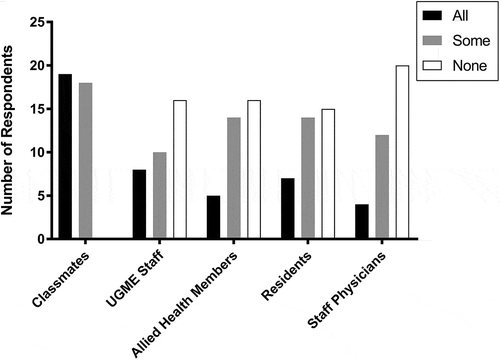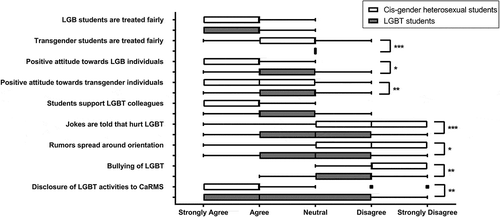Figures & data
Table 1. Characteristics of survey respondents (N = 103).
Figure 1. Disclosure of sexual orientation and/or gender identity. LGBT identifying students were asked to whom of their colleagues and other members of the healthcare team they have disclosed their status. Allied health members: Nurses, physiotherapists, occupational therapists, etc. UGME: Undergraduate Medical Education office.

Table 2. Students’ exposure to anti-LGBT discrimination and heterosexism.
Figure 2. Medical students’ opinion on LGBT discrimination. Box and whiskers based on Tukey’s method. Box delineates interquartile range (IQR), with the vertical line inside the box showing the median. Whiskers extend from the lowest value or the 25th percentile minus 1.5 IQR, whichever is lower, to the highest value or the 75th percentile plus 1.5 IQR, whichever is higher. Data points that are outside of the whiskers’ range are plotted independently. Data are presented separately for LGBT-identifying and cis-gender heterosexual students. Comparison between the two groups is performed using Wilcoxon-Mann-Whitney’s test. All significant differences are noted on the graph.
* p < 0.05, ** p < 0.01, *** p < 0.001. CaRMS: Canadian Residency Matching Service. LGBT: Lesbian, Gay, Bisexual and Transgender individuals.

Table 3. Self-reported knowledge of LGBT terminology and comfort level providing medical care to members of the LGBT community.
Table 4. Personal beliefs on why individuals are LGBT.
